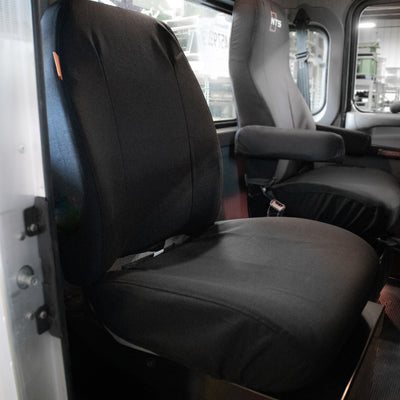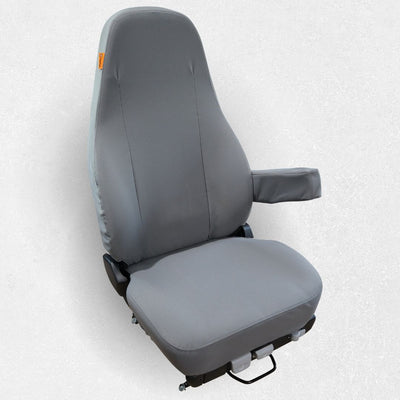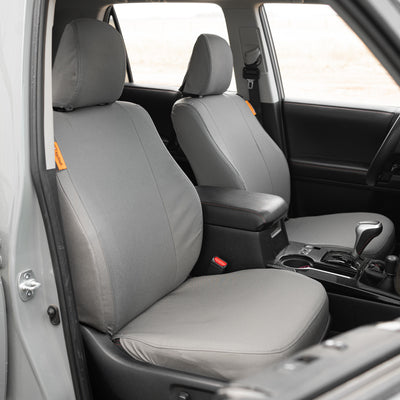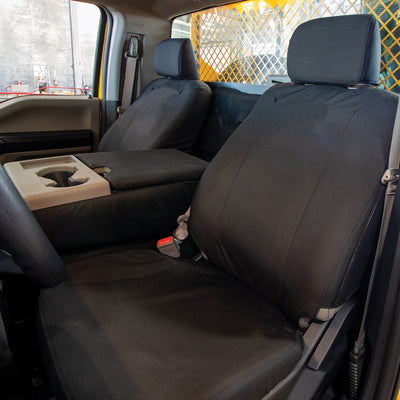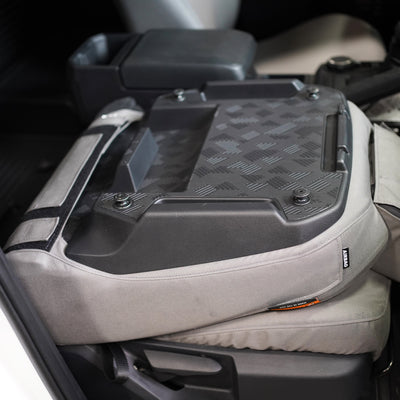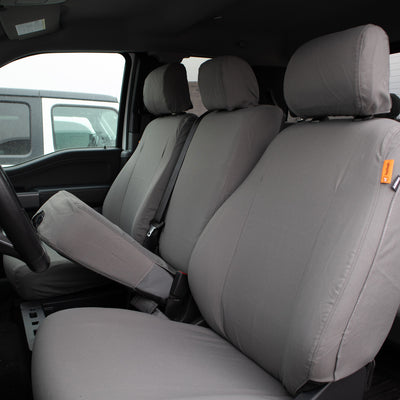Seat Covers vs. Drywall Mud

Have you ever accidentally gotten drywall mud on your seat covers and wondered how tough cleaning up would be? OK, maybe not, but we decided to put our seat covers to the test and share our findings.
In our usual style, we didn't just apply a little drywall mud; we slathered on a generous amount and then used a heat gun to dry it thoroughly, making sure it really set into the fabric.
Initially, the big wet globs of mud wiped off with no trouble using a wet wipe—a good start. However, the real challenge was the dried mud, which was too stubborn for a simple wipe. That’s when we had to get serious: out came the scraper to remove the bigger, hardened chunks.
Once the chunks were gone, we liberally sprayed an all-purpose cleaner and scrubbed it with a rag. This part took a bit of elbow grease, especially for the toughest spots that had dried onto the fabric. But after a couple of minutes of persistent scrubbing, the results were clear—the seat cover looked as good as new. All traces of the mess were completely gone, and you'd never even know there had been drywall mud on there at all.
This experiment was another successful torture test. With the right techniques and a little persistence, TigerTough seat covers can handle even the messiest of challenges. So, whether you’re in the middle of a home renovation project or just prone to spills and splatters, rest assured that cleanup can be a breeze.Recent Posts
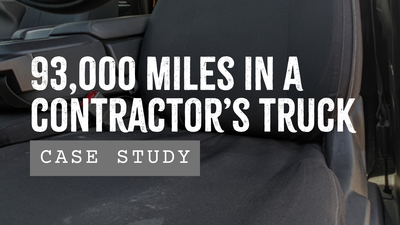
Case Study: 93,000 miles in a contractor's GMC Sierra

Marathon Seat Covers by Covercraft vs. TigerTough








